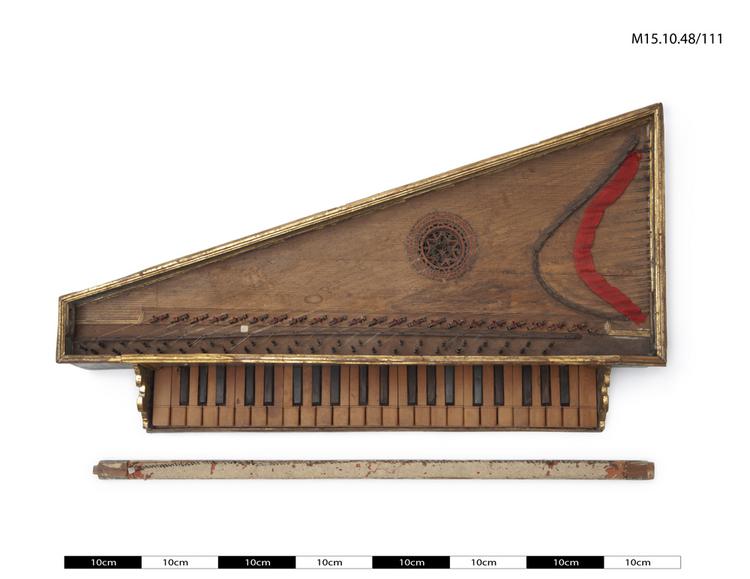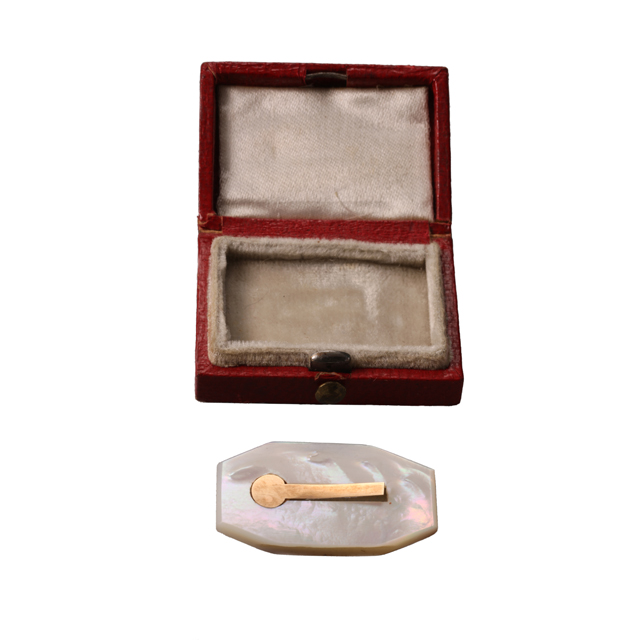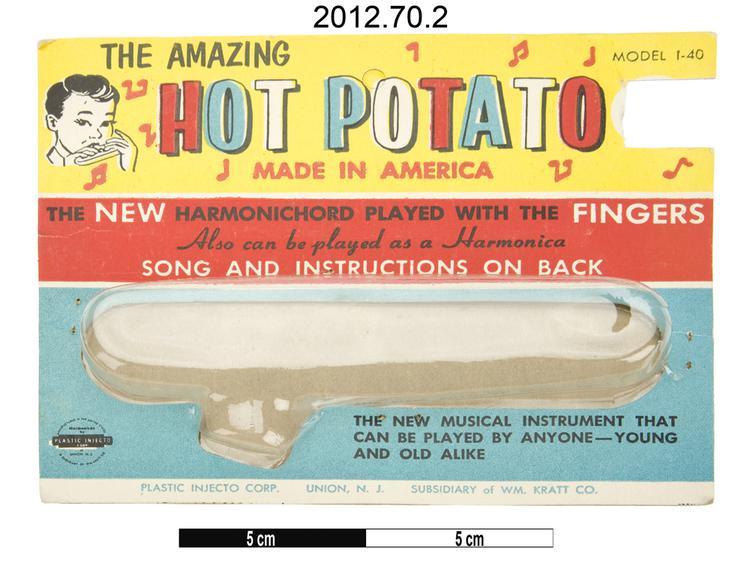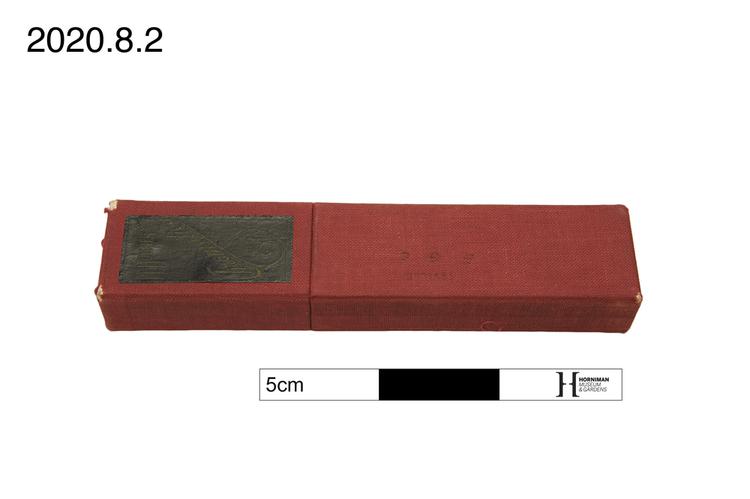
Octave Spinet. 4 octaves, short octave C/E to c''' 45 notes. Triangular shape with projecting keyboard. Case painting with coloured flowers on light blue-green ground dates from the 19th century. Triangular shape. Structure and action, largely original. Some old or original cloths on the keyframe and the jackrail.
Lavishly decorated octavinos may have been commissioned as wedding gifts or ostentatious curios. When made, the lightly built case of this instrument would probably have rested within a separate and robust outer case fashionably decorated according to current tastes. Played by women, some were designed to serve also as writing desks, sewing or jewel boxes. The unoriginal floral decoration on this instrument, probably dating from the 19th century, may conceal later restoration work and evidence of its provenance. Octavinos, which have the same plucked action as the harpsichord, were often used to accompany the voice or soft instruments. It was about this type that Charles Burney famously commented in 1773, "Throughout Italy they have ... little octave spinnets to accompany singing, in private houses, sometimes in a triangular form...of which the keys are so noisy, and the tone is so feeble, that more wood is heard than wire."

































































































































































































































































































































































































































































































































